Now that we have finished reviewing all those Shooting Positions we need to Zero our rifle. But before we can zero our rifle we need to choose a zero. Easy right…
Well, there are a number of different zeros you can choose from and with the AR15, even more so. To complicate this matter you will also need to choose a load that is stable for your given rifling twist rate…
In the Basic Rifle Marksmanship (BRM) Series– you may remember a mention of the different zeros. We will get a little more in depth with those. I will place my disclaimer here, I am not a scientist, I am a shooter. There are a multitude of resources on ballistics and zeros all over the Internet. I will give a brief run down on the different zeros. If you want more information, I will point you in the right direction. Believe me, this can get very complicated if you want it to, so this is as basic as it gets.
To start we will talk briefly about your barrels rifling twist rate. Your barrel should have the twist rate etched or stamped somewhere on it visible to you. It will most likely have what the barrel is chambered for next to the twist rate.

Why is this important? The AR15 can be chambered in a multitude of different calibers for one but in general we will assume you have one chambered 5.56x45mm. Why is this important to know? Because .223cal (.223 Remington) and 5.56 are often used interchangeably but hear me now, they are NOT the same (Well, they kind of are).
The “throat” of a 5.56 chamber is slight longer than a .223 and the 5.56 is loaded to a higher pressure. This is important to know incase your AR15 states it’s chambered in .223cal and NOT 5.56. So what does this mean to you? It means that you CAN shoot .223 in a barrel chambered for 5.56 but YOU CAN NOT shoot 5.56 in a barrel chambered in .223cal. (Yes, this is an oversimplification but if you are new to shooting just start here and as you learn more, which I hope you do, you will see where I simplified certain topics, including this one. More can be found here and here regarding this topic.)
Back to twist rate, what is yours? 1:14, 1:12, 1:9, 1:8 or 1:7? What does this mean? Simply put it is how many inches it takes for your bullet to make a full revolution in inches while traveling down the barrel. ie. 1 revolution in 14 inches, 1 revolution in 12 inches, 1 revolution in 9 inches etc. What effect does this have on our bullet choice? Certain twists lend themselves to certain bullet weights (measured in grains = gr) in order to stabilize them in flight. Meaning that they fly straight with a nice spiral and not tumbling end over end or lose too much accuracy.

Here’s an over simplified break down of twist rates and bullets they should typically stabilize.
1:14- 52gr and less, 55gr is pushing it, ideally you probably want something in the 36-45gr range (If you actually somehow have an AR15 in 1:14 twist buy a new barrel in a standard twist, you somehow managed a specialized varmint barrel…) Fun Fact: 1:14 was the twist the military initially adopted but quickly moved to the 1:12.
1:12- 60gr and less, some say you can get away with 62gr, most say 55gr and less with “ideal” being around 40gr. (If you have a 1:12 it’s typically an AR15 built for varmint hunting where light and fast bullets are the norm)
1:9- 55gr-69gr is the standard but many 1:9 barrels can handle weights up to 77gr. The 1:9 is the start of the versatile twist rates and a very popular twist for the AR15 on the civilian market. This also shows where once again, you need to test different weight bullets in YOUR AR15 to see what works.
1:8- 55gr-77gr and some even say 80gr (but can your AR feed that?). The 1:8 is “probably” the most versatile of twist and is growing in popularity.
1:7- 62gr-77gr-MilSpec baby! It can typically handle 55gr (depending on barrel length) and even 90gr though those 90gr will need to be hand loaded one at a time… This is the current twist in use with the military.
Understand that all these twist and bullet weights are a starting point for you to pick an appropriate load to start with (55gr cough*). You can experiment all you want with any bullet weight and see what works best in YOUR AR15.
Now we will again cover the trajectory of a bullet in its most simple form. A bullet is not a laser. It does not fly in a straight and flat line. It NEVER rises after it leaves the barrel. It instead immediately begins to fall to earth due to the effects of gravity. Just like throwing a ball, we angle our throw up into the sky in order to have the ball fall back to the ground at the point we would like it to hit. The same thinking can be applied to how bullets fly. With the aid of our sights we are angling our barrel up from our line of sight to fire our bullet up into the sky with the desired result of hitting our target at a specific point in our bullets trajectory.
(Photo credit ZRXC77)
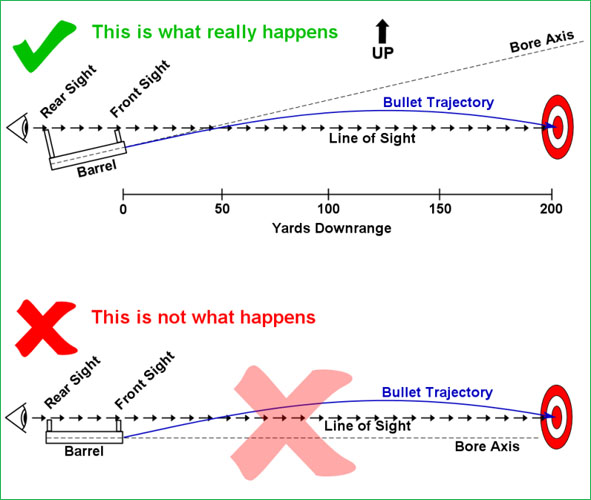
This trajectory has a Maximum Ordinate (or arc) of travel, which the bullet will reach and then start to fall back to the ground. The height of this Maximum Ordinate (max arc) will depend on your zero, ammunition used and height of your sights. To further understand this arc you may recall that I mentioned previously that in that trajectory your rifle will have roughly 2 zeros, a “Near-Zero” (bullet traveling up to its max ordinate) and a “Far-Zero” (bullet traveling down from its max ordinate). This is where the Max Ordinate in that bullets trajectory comes into play when deciding which zero to choose for your AR15. The Internet is full of debates on which zero is the best zero for the AR15. The smart response is always, “What are you going to use the rifle for?” or “What distance do you plan on shooting at the most?”, and the debate rages on.
Lets make note right here that if you zero for the near distance this does not in fact mean you are exactly zeroed at your far distance. Shooter error that is not noticeable at the near zero/distance may be severely off at the far zero/distance. So when zeroing, understand that the only way to truly know your zeros and holds at any given distance you have to in fact, shoot at those distances. Further more, the details of your AR15 and the ammunition you use will also dictate the reliability of these zeros. Meaning if you use a 20” AR15 with M193 55gr ammo it will not be the same as a 16” AR15 shooting 75gr ammo even if both are zeroed at 50 yards. This does not mean they will both intersect at 200 meters at the Far-Zero.
But, there is always a but, it’s close enough for government work…
Lets also make note that in general we will be referencing the approximate trajectories of the two most common ammunition, standard XM193* 55gr and XM855* 62gr. Why do I say approximate? Because until you get out and shoot your AR15 everything is just an educated guess based off of numbers and graphs of approximates. (*You can not buy “real” M193 or M855, only civilian versions).
In regards to the following graphs and trajectory charts, these numbers are just basic numbers to give you an idea. These numbers depend on the bullet weight, the bullets ballistic coefficient, velocity of your given load, length of your barrel, height of your sights over the bore and even the weather. The ballistic coefficients and velocities I used were taken from Kyle Lamb’s Green Eyes & Black Rifles, the sights height was measured from my AR15 and the ballistic/trajectory calculator used is from Shooterscalculator.com.
Time to choose your zero.
The Army uses a 25/300m zero, the “m” meaning “METERS”. Yes, meters, odds are you are more familiar with yards so take that into consideration when choosing a zero. So what does a 25/300m zero mean? With this zero you will have a Near-Zero of 25 meters and a Far-Zero of 300 meters. Now we consider the trajectory and Max Ordinate (Max Arc) of our bullet. Why does this matter? Well it matters if you are shooting at a 12” plate at 100m and can’t hit your plate. Why can’t you hit your plate? You are aiming right at it!?! Because with a 25/300m zero your bullet is ~6” high at 100m and still not at its Max Ordinate (arc). At 200m your bullet will still be ~7” high as it is falling into the 300m zero. At 400 yards you are looking at a drop of 9”-11”. This is why you must know your holds for your rifle and your ammo at any given distance.

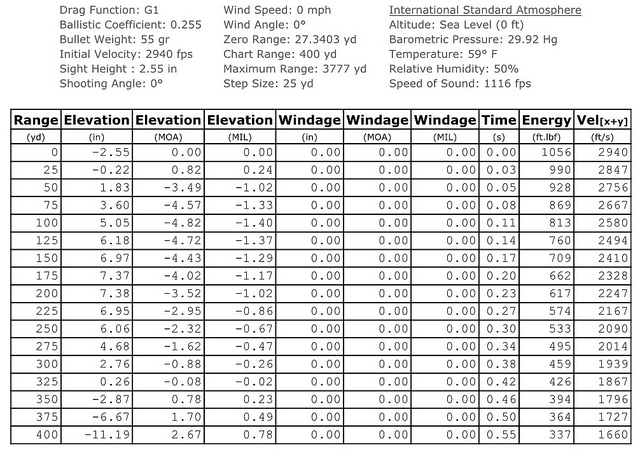

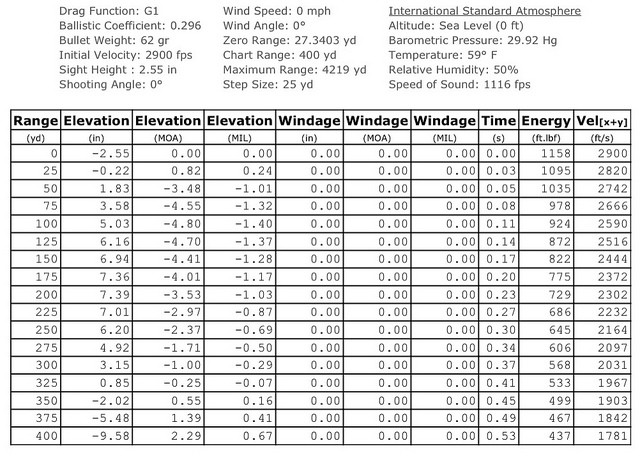
What about the Marine way, 36/300 yards zero? Here you do your initial zero at 36 yards. This is a zero used by the Marines that give them roughly 3” high at 100 yards and roughly a 4” max ordinate (max arc) between 125-175 yards. The flight of the bullet will again intersect the line of sight around 300 yards as it falls back towards the ground. At 400 yards we see a drop of about 17”-19”. Not a bad zero all things considered. Though according to our generic graph the 300 yard intersect looks more like a far zero of between 250-275 yards. Again, this highlights the need to always confirm with actual data derived from shooting at those distances.

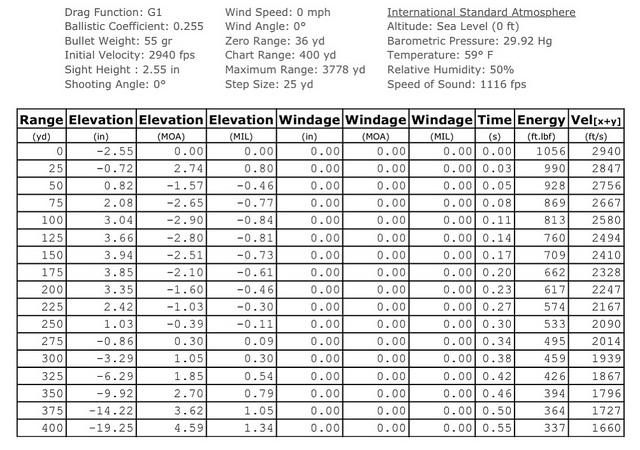

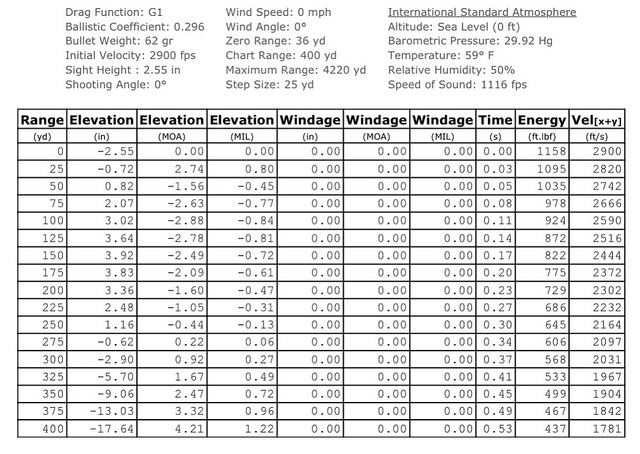
How about the 50m zero? At 100 yards your bullet will be ~1” high. Its max ordinate (arc) will be only be ~1.2” around 120 yards. By about 250 yards the bullet will only be ~4” low. By 300 yards the bullet will be ~10” low. The 50m zero is a strong contender with XM193. With XM855 we see a drop of ~3.4”-4” at 250 yards, a drop of ~9” at 300 yards and at 400 yards a drop of ~25”.
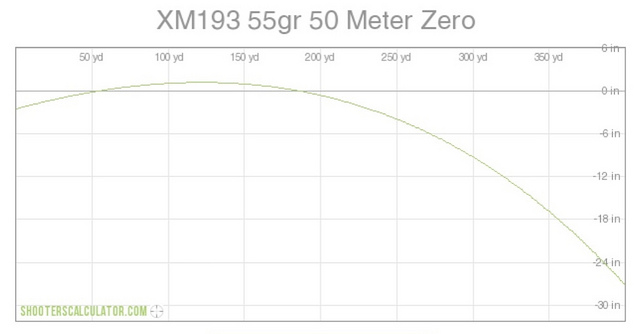
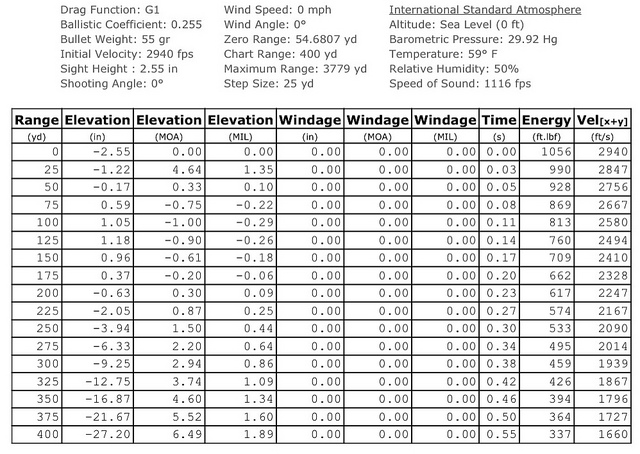

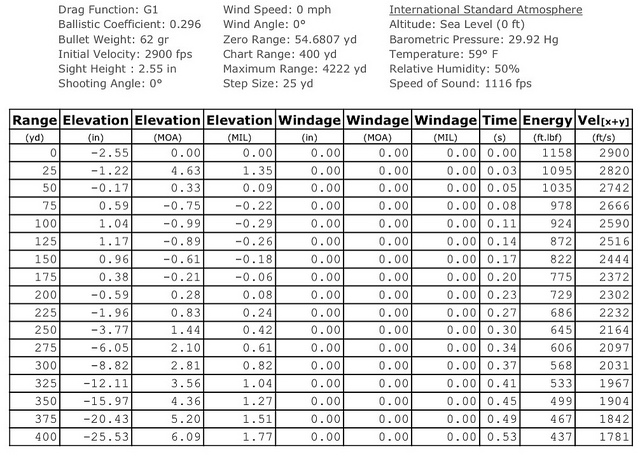
100 meter zero? With XM193 we are not seeing any major deviation until we hit 200 yards where we see a drop of ~2.7”. At 300 yards a drop of ~12” and at 400 yards ~30”. Making the 100m zero a pretty solid zero out to about 200 yards.
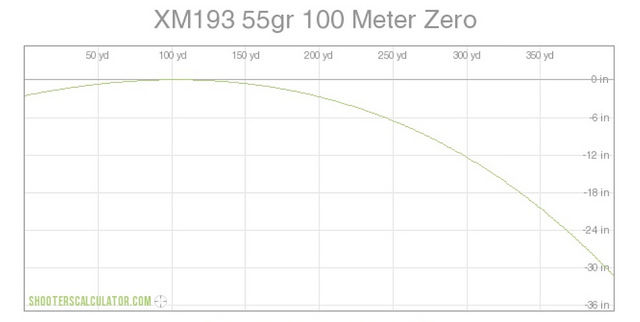
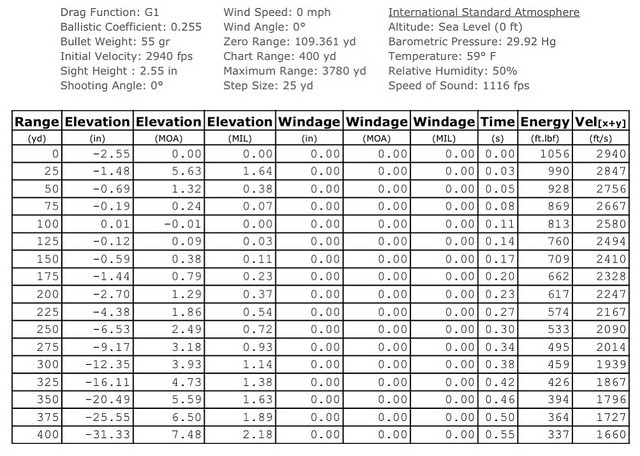

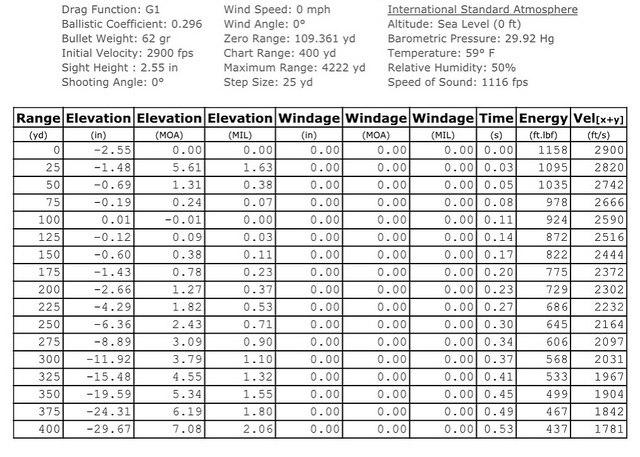
100 yard zero? With XM193 we are again seeing pretty good trajectory out to 200 yards where our bullet will be ~2.7” low. By 300 yards we are in the ~12” drop range and ~30” at 400 yards. Very similar to the 100m zero.


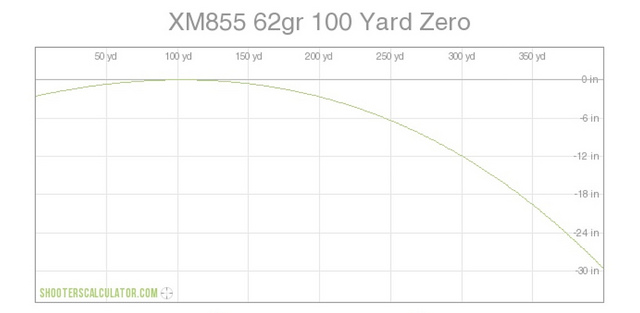
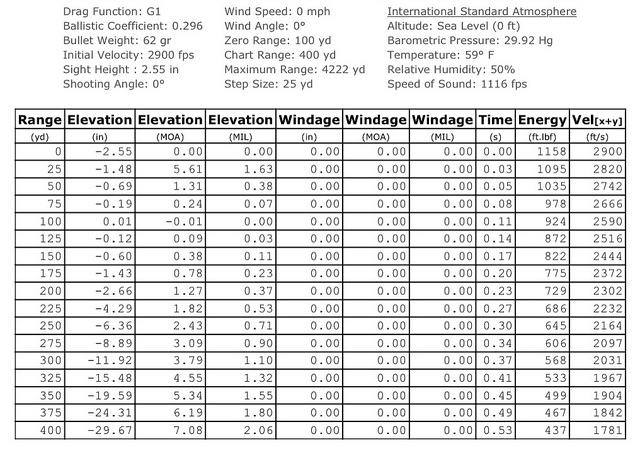
Now lets look at the 50/200 yard zero. If you recall I led into this being something of a misnomer. The 50/200 yard zero is a 50 yard zero, which will intersect the far zero again at 200 meters, or 219 yards. And yet again this is dependent on your barrel length and ammunition choice as seen by the results in the accompanying graph and trajectory chart. But for general purposes you will be close enough to make meaningful hits on your target.
During the flight of the bullet you are never more than roughly 2” above or below your POA out to roughly 250 yards where you will be about 3” low, 8” low at 300 yards and ~24” at 400 yards.

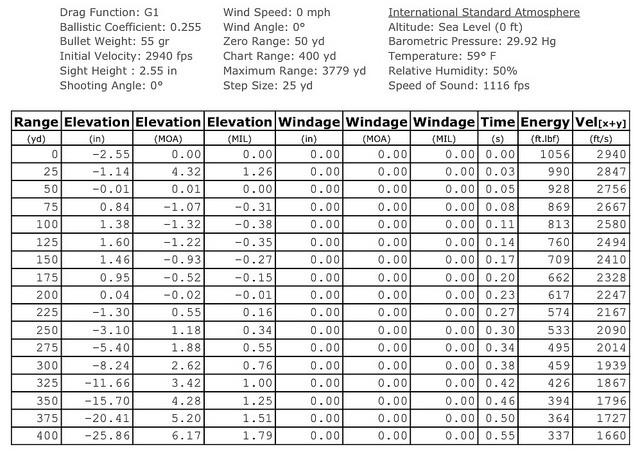
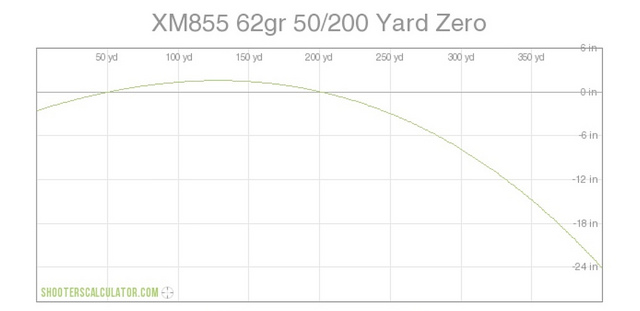

MPBR? What is the MPBR? This is the Max Point Blank Range and has been used by hunters for generations. This is a zero based on the vitals zone of the targeted game. If you are hunting an elk and the vitals zone is roughly 15”, this gives you a deviation of 7.5” up or down and you zero your rifle so the trajectory of your bullet never rises or drops more than 7.5”. The point at which the bullet falls below 7.5” is your MPBR.
If you use the “A” zone of an IPSC target being 11” and our current data with XM193 our MPBR is 342 yards with a near zero of 31 yards and a far zero of 294 yards. This will net you a Max Ordinate of ~5.61” around 170 yards. Not a bad zero but does it really offer much over the 36/100 yards Marine zero?
Lets reduce the target zone to 6”. This gives us a near zero of 40 yards and a far zero of 241 yards with a MPBR of 279 yards. Our bullets Max Ordinate will be ~3.02” around 145 yards. This gives us ~3” high or low out to 279 yards. Also not a bad zero, but what does this offer us over the 50/200 yards zero?



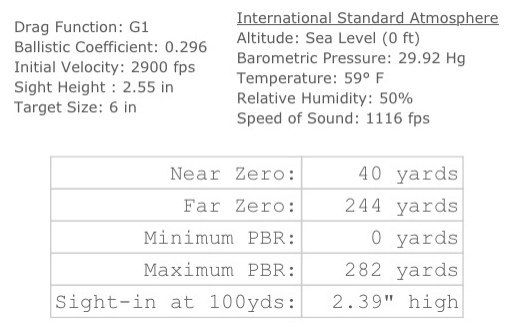
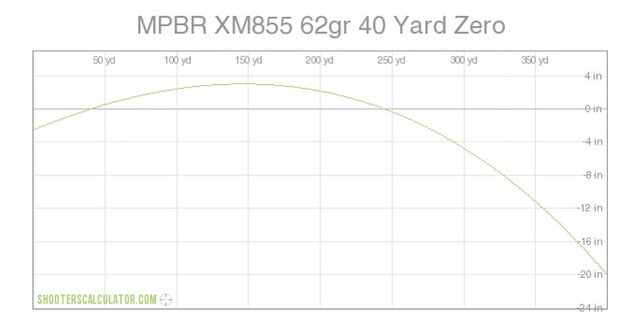
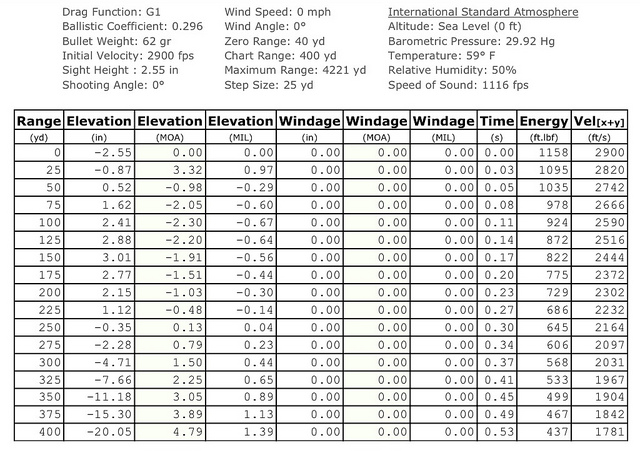
Are you thoroughly confused at this point? Still not sure which zero you should choose? I suggest you take the following into consideration:
– What twist is your barrel?
– What ammunition load do you what to shoot?
– What distance do you plan on shooting the most at?
– Do you have to shoot at a range that only allows certain distances?
– Are you shooting paper or do you plan on hunting with this AR15?
– Are you going to compete in the action shooting sports or High Power?
– What is your acceptable amount of deviation through a given distance?
With those questions answered you can pick a distance to start with. Once zeroed, it is on you, the shooter, to get out and shoot at any given distance and see what you, your AR15 and ammunition choice can do.
For the record, I personally zero all my AR15’s at 50/200 yards and mostly with 55gr Wolf. The exception being my Self Defense/Home Defense (SD/HD) AR15 and my Hunting AR15 (which is the one you see in this BRM Series). Both still zeroed at 50/200 but with different loads.
While this may seem like a lot, don’t over think it. Pick one based on the above criteria and we can get out and zero our AR15.
*This post and the information herein is for informational and educational purposes only. Use at your own risk. Always follow the 5 rules of Firearms Safety when handling any firearm.
*If you like this content and would like to support the page you can do so here.


Leave a comment